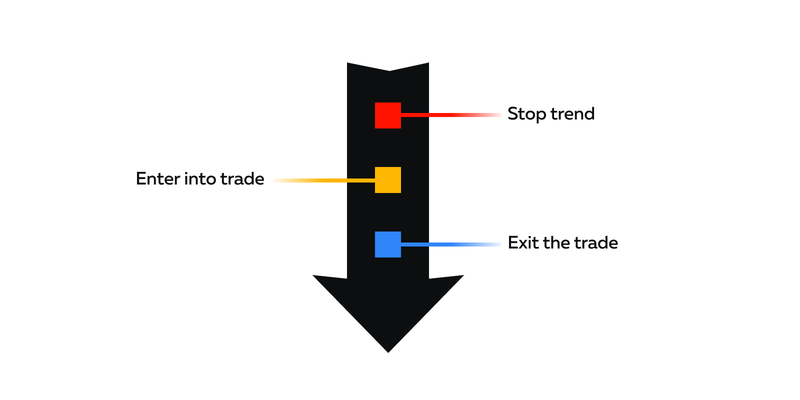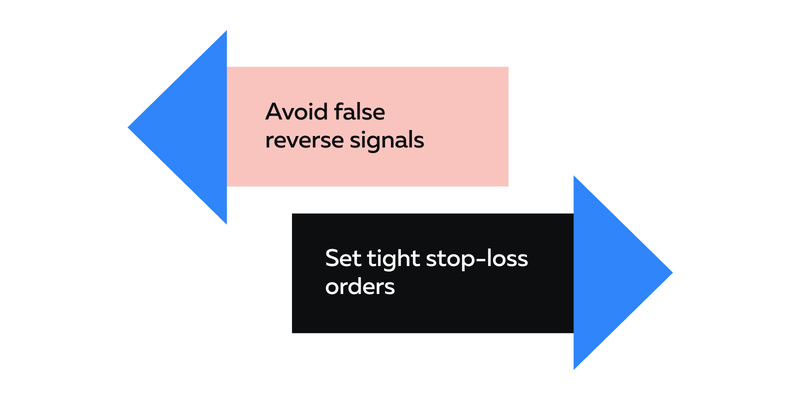

December Trading
Deals Are Live!
Save on Global+, data access,
and add-ons.
See All December Deals

Black Friday
Nov 28-Dec 31
29 days : 6 hours
50% OFF Global+ Quarterly
+ 50% OFF Data (3 months)

Cyber Monday
Dec 1 - Dec 31
29 days : 6 hours
60% OFF Global+ Monthly
+ Data (1 month)

Add-on Deals
Dec 1 - Dec 31
29 days : 6 hours
50% OFF
Add-ons

New Year Sale
Dec 26 - Jan 1
23 days : 6 hours
30% OFF Global+ Lifetime
*Data not included
Education
December 4, 2024
SHARE
Diverse Trading Strategies: An Exploration of Methods and Mindsets

The financial markets are challenging. Most institutional investors and day
traders test your every market move. Are you ready to take on this challenge
and learn to thrive in this unpredictable world of financial markets?
Having a
backtested trading strategy
can come to your rescue. However, these strategies exist in abundance. This
leaves you with the difficult option of choosing one that is appropriate to
your level of risk tolerance and financial goals.
A deeper understanding of the market will play a crucial role in determining
which trading strategy will work the best for you. Through this introductory
article, you will expand your knowledge base as well as explore different
trading strategies. Ready to discover how charts, patterns, and indicators
can help you make smarter trading decisions? Let’s dive in!
Exploring Popular Trading Strategies
In financial markets, there exists a vast array of trading strategies. From
day trading to long-term investing, the choices are seemingly endless.
Indeed, trading is not a one-size-fits-all endeavor. What works for one
person might not work for another. Thus, the chosen trading strategy must be
tailored to your circumstances and preferences.
What is Your Risk Tolerance Limit?
At the heart of selecting the right trading strategy is understanding your
risk tolerance. Some traders thrive on the fast-paced, high-risk environment
of day trading, while others prefer the stability of long-term investments.
It’s crucial to assess your comfort level with market volatility and the
potential for gains and losses.
How Aggressive Are Your Financial Goals?
Your financial goals play a significant role in shaping your trading
strategy. Finding answers to the following questions will influence which
strategies are the most suitable for you:
-
Are you looking for short-term profits or long-term wealth
accumulation? -
Do you prioritize income generation or capital preservation?
Are you Market-savvy?
A deep understanding of the market is vital. A trader must be aware of how
the market functions and gets manipulated by the influential market
participants. Knowledge of market trends, fundamental analysis, and
technical indicators can help you choose an appropriate trading strategy
that works.
Additionally, to be an effective trader you must be able to comprehend the
dynamics of the asset you are trading, whether it’s stocks, forex,
cryptocurrencies, or commodities.
-
Trend Trading
Are you ready to ride the market momentum? Trend trading is the act of
capitalizing on sustained market movements, be it an upward rally or a
downward slide. This strategy seeks to make profits by recognizing and
following prevailing trends in financial markets.

-
Spot the trend:
-
Use tools like moving averages, trendlines, and volume
indicators to spot the trend. -
These tools help in:
-
Validating the strength of the trend and its potential
longevity. -
Timing the market
-
-
-
Enter the trade:
-
Try buying into an uptrend or selling in a downtrend.
-
Do this only when you believe the trend will persist.
-
Set trailing stop losses as they help in:
-
Protecting profits and
-
Limiting potential losses.
-
-
-
Exit the trade:
-
Spot trend exhaustion signals to determine when the trend might
be reaching its end. -
Plan for your exit.
-
Trend Trading: A Friend and Foe
Trend trading can be highly profitable in markets with sustained trends.
It’s a relatively straightforward strategy that fits well with “the trend is
your friend” mantra. However, it’s not foolproof. In highly volatile
markets, false signals can be generated, leading to potential losses. Thus,
like any trading strategy, trend trading also carries its own set of risks
and rewards.
2. Arbitrage
In financial markets, price discrepancies exist. In the trading strategy of
arbitrage,
you try capitalizing on the price discrepancies.
How to Do it:
-
You try to simultaneously buy and sell the same assets or a closely
related asset in different markets. -
The goal is to ensure almost instantaneous execution to take
advantage of price differences. -
For example,
-
Let’s assume that a stock is trading at a lower price on one
exchange compared to another. -
As an arbitrage trader, you will buy it on the cheaper exchange
and sell it on the more expensive one. -
Thereby, making a profit from the price difference.
-
Is it Still the Same in the Modern Financial Landscape?
In the modern financial world, technology has revolutionized arbitrage.
Algorithmic and high-frequency trading have become essential tools for
arbitrageurs. These systems can identify price discrepancies and execute
trades within milliseconds, far faster than human traders. Thus, today,
speed and efficiency are critical in capturing arbitrage opportunities.
How Prevalent Is It?
Despite the benefits of technological advancements, arbitrage opportunities
are not as abundant as they once were. This is largely because as more and
more traders adopt high-frequency and algorithmic strategies, price
differences tend to be short-lived and get quickly corrected. This leaves
minimal scope for price arbitrage.
Additionally,
-
There’s a risk of execution lags.
-
It refers to the situation where a trade doesn’t get filled as
anticipated due to network delays or other issues.
3. Scalping
Stock trading nowadays is all about swift and precise profit hunting.
Scalping is a trading strategy that involves making rapid, in-and-out
trades. The primary goal is to secure small, incremental profits.
Some Common Characteristics
-
Scalping trades are of very short duration, often just minutes or
even seconds. -
Small price movements are targeted.
-
Most traders use high leverage to maximize their potential gains.
-
Frequent trades are executed throughout the trading session.
How Do Successful Scalpers Trade?
Successful scalpers rely on specific tools and indicators to identify
short-term price movements. Level II market data provides them with a
real-time view of buy and sell orders. This order flow data is crucial for
understanding market sentiment and identifying potential opportunities.
Also,
-
To gain granular insights into price changes, scalpers often use
tick charts. -
These charts display price movements on a tick-by-tick basis.
Challenges of Scalping
Scalping is not for the faint of heart. It requires intense mental focus and
emotional discipline. Most scalpers make quick decisions under pressure.
Most importantly, the potential for incurring losses is huge while
practicing scalping. This is because even a small adverse price movement can
result in significant losses when employing high leverage.
Additionally, brokerage costs can also eat into profits; given the frequency
of trades in scalping.
4. Momentum Trading
In momentum trading, “accelerating price movements” are capitalized. The
primary aim is to ride the coattails of stocks or assets that are already in
strong, accelerating trends.
The Underlying Belief
Momentum traders believe that assets that have been performing well will
continue to do so in the short term. Thus, it is profitable to open
positions in these assets.
How Can You Practice Momentum Trading?
|
Steps |
Explanation |
|
Spot Prevailing Momentum |
|
|
Trade Execution |
|
|
Risk Management |
|
What are Potential Pitfalls?
One of the most common mistakes is chasing a stock. This means entering a
trade too late after most of the momentum has already occurred.
Additionally, over-leveraging can amplify losses. This is because of:
-
Rapid price reversals that can lead to significant drawdowns and
-
Being caught in sharp reversals that can erase previous gains.
5. Reversal Trading
Are you looking to bet against the current? Reversal trading is a strategy
that goes against the prevailing market trend. It seeks to profit from the
reversal or change in the direction of asset prices.
Contrarian by Nature
-
Reversal trading is often referred to as contrarian in nature.
-
This is because it ignores the prevailing market trends and bets
against them. -
The primary intention for such an approach is the belief that the
current trend is about to change direction.
How To Spot Reversal Signals
You can use different tools and indicators to identify potential reversals.
Refer to the table and gain a fair idea:
|
Indicator Used |
Signal Provided |
|
Weakening Trend |
|
Stochastic Oscillator |
Overbought/ oversold conditions |
How to Manage Associated Risks
Reversal trading can be profitable if you catch major price reversals at the
right time. However, it also involves the risk of entering too early or too
late. Reversals are hard to predict, and you may lose money if the trend
persists.
Therefore, you need to manage your risk carefully when trading reversals.
You can do so by:

-
Using confirmation techniques to avoid false reversal signals.
-
Setting tight stop-loss orders to limit potential losses in case the
reversal doesn’t occur as expected.
6. News Trading
Let’s ride the waves of information.
News trading
is a strategy in which major news events that can trigger significant market
movements are capitalized upon.
It’s a fact that major news events have the power to create substantial
price fluctuations in financial markets. From economic reports to
geopolitical developments, news can significantly impact market sentiments
and consequently the value of assets.
How Can You Decipher the Impact of News?
-
News releases typically follow a pattern.
-
There’s an immediate reaction, where prices move swiftly upon news
release. -
This is often followed by overreactions, where prices may move
excessively in one direction. -
Eventually, the market tends to correct itself, finding a more
stable price level.
Additionally,
-
For scheduled announcements, traders might use techniques like
“straddles”. Following this technique, they can simultaneously buy
and sell options to profit from the expected price volatility. -
For unscheduled news, rapid execution tools, often used in
algorithmic trading, can help traders react swiftly to news events.
7. Dollar-Cost Averaging
Dollar-cost averaging (DCA) involves spreading out investments over time,
rather than making a single, lump-sum investment. Let’s understand using a
hypothetical example.
-
Mr. A has $12,000 to invest in a volatile stock.
-
Instead of investing it all at once, he chose to invest $1,000 every
month for a year.
The Benefit
DCA is particularly beneficial in volatile markets. For instance:
-
If the stock’s price is $100 per share, the investor initially buys
10 shares. -
If the price drops to $80 in the next month, they can buy 12.5
shares. -
This way, the investor buys more shares when the price is lower,
reducing the impact of market fluctuations.
Is DCA for you?
DCA is particularly suitable for passive investors who prefer a steady and
low-stress approach to investing. Also, it might not be the best choice in
all scenarios.
For example, if an investor has a substantial amount of cash and the market
is in a clear uptrend, making a lump-sum investment might capture more
significant gains.
Conclusion
There is no ‘one strategy fits all’. Selecting the right trading strategy is
a highly individual process that is dependent on factors like risk
tolerance, financial goals, and market understanding.
What worked yesterday may not work tomorrow, so flexibility is key to
staying on course toward your trading objectives. Ongoing education,
backtesting, and adaptability must be practiced religiously.
Are you interested in further refining your trading approach? Dive deeper
into various strategies and get insights on tailoring the right one to your
needs. Explore more on
how to choose the best trading strategy
for you. Your next trading evolution awaits.